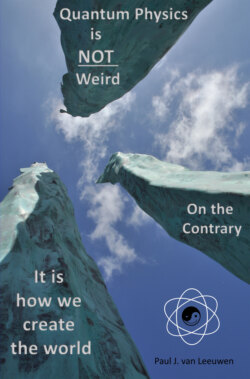Читать книгу Quantum Physics is not Weird. On the Contrary. - Paul J. van Leeuwen - Страница 26
На сайте Литреса книга снята с продажи.
4: The collapse of classical physics
Оглавление"As far as the laws of mathematics refer to reality, they are not certain, and as far as they are certain, they do not refer to reality"
Albert Einstein, physicist 1879-1955
In this chapter we start with a more extensive treatment of the character and behavior of different types of waves - standing waves in particular- in different mediums, in order to understand that they all have very common characteristics. Before the end of the nineteenth century physicists were already very proficient in mathematics describing the behavior of every known type of wave. Applying their wave mathematics to the quantum world seemed an obvious choice and proved itself to become so highly apt for creating a quantum theory, that quantum physics would become the most successful and accurate physics theory in the 20th century.
But before quantum theory was firmly established many questions concerning the atom and its behavior had to be solved. And every inspired solution seemed to generate more questions than it had solved. Newtonian physics seemed poised to slide away into unpredictable depths.
Einstein used Planck's idea of discrete energy packets to solve the riddle as to why only light above certain frequencies could free electrons from metal and was awarded a Nobel prize. His solution was however in paradoxical contradiction with Maxwell's EM-waves. Louis De Broglie, a French prince, suggested standing electron waves around the atom nucleus, which was later confirmed, serendipitously, by electron interference. But how is it possible for an electron be a particle and a wave at the same time? Is it possible to reconcile these disparate views?
